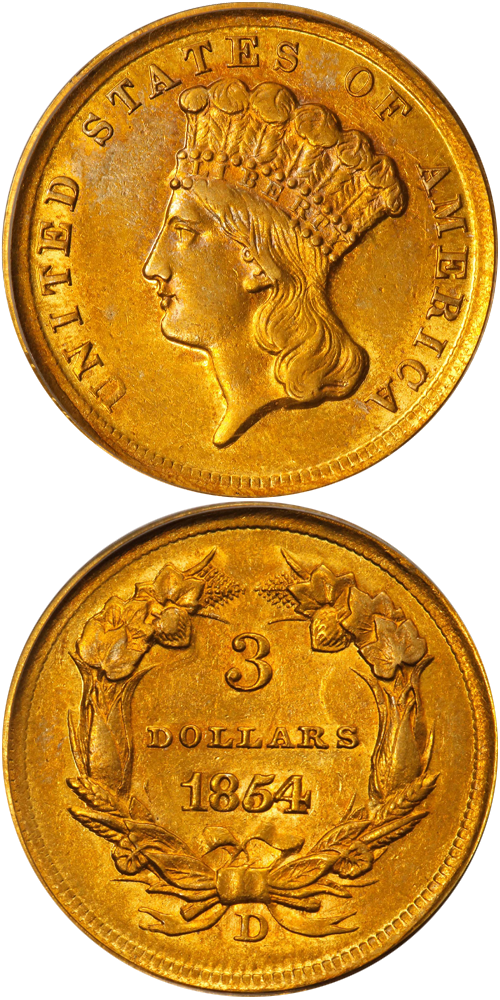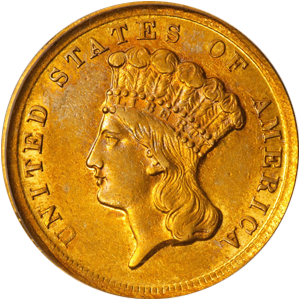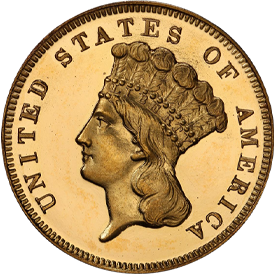Designed by: James Barton Longacre
Issue Dates: 1854-1889
Composition: 90% gold, 10% copper
Diameter: 20.5 mm
Weight: 5.015 grams (77.39 grains)
Edge: Reeded
Business Strike Mintage: 538,074
Proof Mintage: 2,060 (estimated)
The $3 pieces were first coined in 1854 and were produced at the Philadelphia Mint continuously through 1889. The obverse features the head of an Indian princess, facing left, wearing a feathered head dress upon which is a band inscribed LIBERTY. The inscription UNITED STATES OF AMERICA surrounds. The reverse displays an agricultural wreath enclosing 3 DOLLARS and the date. The obverse portrait and the reverse wreath are similar to those found on the Type II gold dollar minted 1854-1856, while the reverse wreath was later used on the Flying Eagle cents of 1856-1858.
The $3 design was continued without major change from beginning to the end, except that issues of the year 1854 alone have the word DOLLARS in smaller letters than do the pieces from 1855 to 1889. In addition to the Philadelphia coinage, pieces were struck from time to time at Dahlonega, New Orleans (only in 1854) and San Francisco.
All $3 issues are scarce. However, there will be no problem encountered in locating one of the higher mintage dates such as 1854, 1874, or 1878. Among coins of the 1854-1859 era, grades most often encountered range from Very Fine to Extremely Fine. AU pieces are scarce, and Uncirculated pieces are rare, with the possible exception of 1854, which occurs more frequently. Superb Uncirculated pieces are quite rare. Among later $3 pieces available grades are higher, with typical grades being in the Extremely Fine to AU range and, in the 1880s, AU to Uncirculated. Superb Uncirculated pieces are quite scarce. Proofs were minted and are available in proportion to their production figures. All are rare.
This “odd” denomination made its appearance in 1854 and enjoyed a 35-year run until its discontinuance in 1889. It is speculated that one of the reasons behind its issuance was that it facilitated the purchase of a “sheet” of one hundred 3¢ postage stamps. Whether or not this was sufficient reason for its creation, the fact remains that the coin proved unpopular with the public, and enjoyed only limited circulation. Only three dates can really be considered “common” – 1854, 1874 and 1878.
Mintages following the Civil War were generally quite low, seldom exceeding 5,000 pieces annually with the exception of 1874 and 1878. Rarities are numerous and include the 1854-D, the unique 1870-S, 1873, the proof-only 1875 and 1876, and the 1877.








